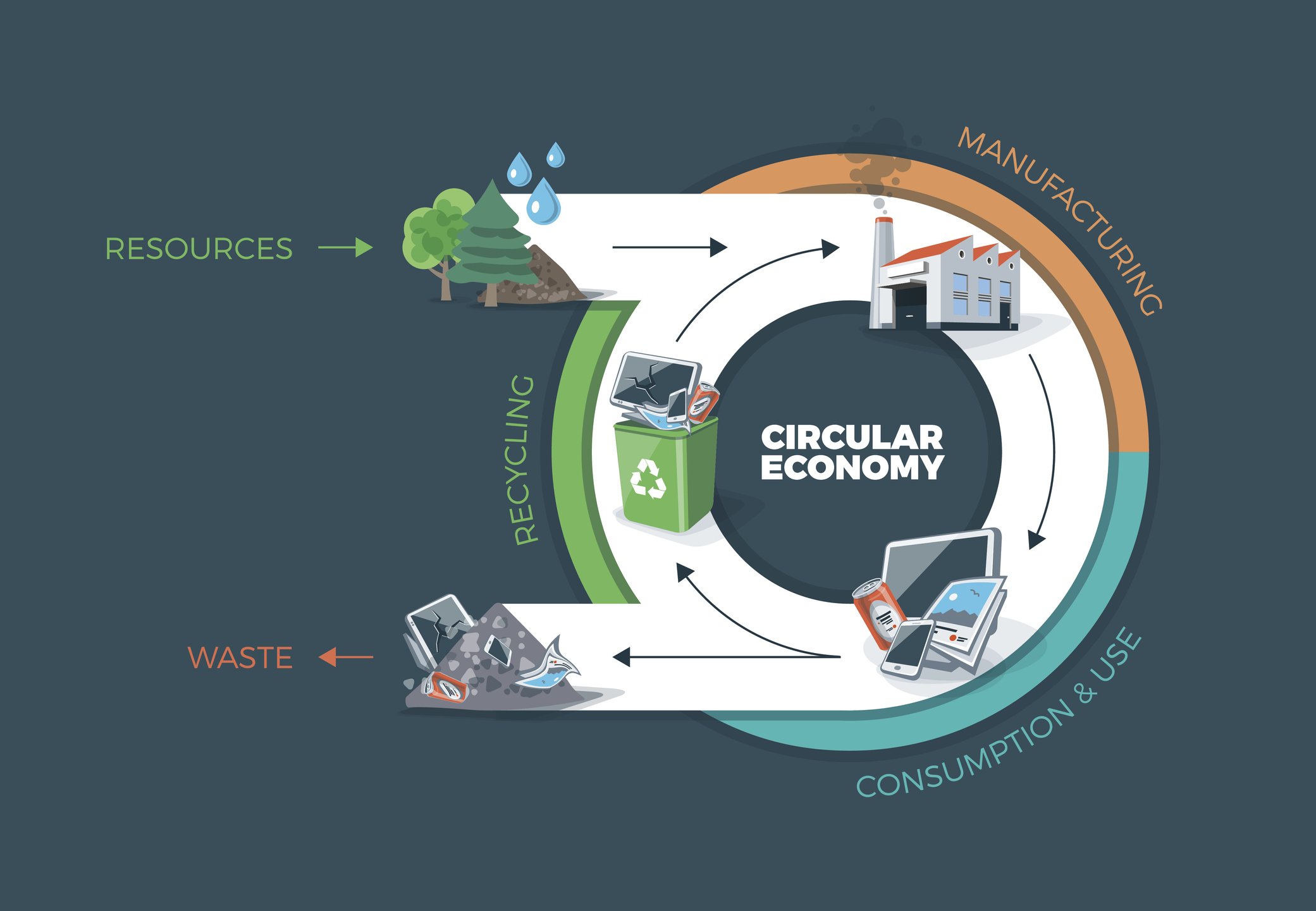We Need To Talk About The Circular Economy
The talk of circular economy has become a hot topic in recent years, aided by it being one of the key proponents in order to help achieve net-zero goals around the world. But there are key challenges in fully understanding what this means, and how steps taken to implement it are troubled by factors that simply replace existing issues, as opposed to fully solving them - so what can we do to adequately address our sustainability goals, and ensure that we have a robust way to go about it?
First of all, what does this all mean? The aim of the circular economy is to eliminate waste as much as possible by sharing, repairing, refurbishing, recycling and re-using most products and materials for as long as physically possible. To make such a transformation on the current economic system is no easy task, but it’s essential in order to achieve our net-zero goals by 2050. Energy infrastructures need a foundation in a circular economy at its base, which is also also an important step in giving cities an added push towards smart, sustainable living.
In order to achieve this, we need a plan for energy transition that can change the way these resources are created and used. Recent events, such as the war in Ukraine, are also a stark reminder of the consequences of fossil fuel interdependence, and the domino effect caused by its impact on the economy.
So how can a circular economy accelerate energy transition and the sustainability of smart cities?
Renewable energies are a mandatory condition in order to achieve (and maintain) net-zero goals and climate change objectives. But for that to happen, we need to widely implement a technological infrastructure that can accommodate solar, wind, hydrogen or other zero-emissions energy solutions.
However, another challenge in transitioning to the circular economy resides in the need to mine for certain materials to achieve net-zero goals under the current model. For example, according to a World Economic Forum study, by 2040 most vehicles are predicted to be electric. But in order to produce batteries, large quantities of lithium, nickel or cobalt are needed - and mining for these poses a threat to the likes of fresh water sources in local communities. Not to mention the fuel currently used in the shipment of cars, or that the electricity used to recharge batteries is still being sourced from coal-fired plants for much of the developed and developing worlds. So additional solutions need to be found beyond a simple switch to electric, as this alone does not solve the existing issues.
When it comes to Smart Cities, the benefits of addressing these issues become all too obvious: traffic, pollution, air quality and so on are instantly improved, drastically improving citizens’ quality of life and creating a more resilient urban environment, as opposed to one where extreme weather conditions exacerbate existing deficiencies.
Most importantly, in order to sustain a circular economy system, we need a robust design to integrate it. In the short term, countries around the globe need to accelerate their transition to renewables, which will also eliminate energy interdependence, and production models need to focus on long-term lasting solutions. The European Union has already taken important steps in this direction, including the Commission’s recent announcement on the acceleration towards renewables way ahead of 2030, and a refreshed plan for energy efficiency. This, alongside smaller, yet hugely significant steps such as enforcing technological interoperability, are an example of strong leadership and pioneership for the rest of the world to follow.
Another key step that smart communities can and must take in order to play their part (and enable their citizens to do the same) is to ensure not only the wide installation but also ease of access to reverse vending machines, which are a hugely important part of the collection and recycling of PET, glass and cans - a fundamental part of the circular economy system. While these are more widely available in parts of Western and Northern Europe (with Scandinavia in particular in the lead), Eastern European countries are largely falling behind in this respect, and it’s still a topic rarely discussed in terms of green priorities for cities.
Once a circular economy system is firmly put into place, Smart Cities will thrive with much more ease, as they encounter fewer challenges in developing sustainable living models for their citizens and the communities in which they live. Along with responsible digitalization, ongoing measures and adequate addressing of major challenges in their implementation give us a tremendous chance to enter a new and improved way of living.
Let’s not waste this opportunity.


